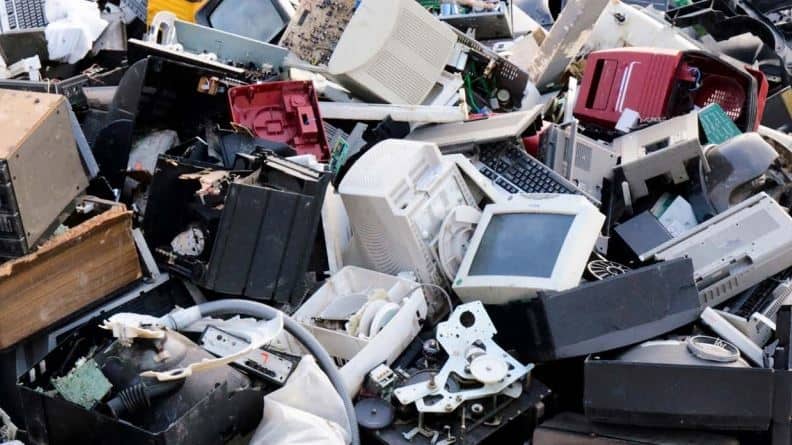Electronic waste is already a problem in different countries, as it pollutes the environment and can harm the health of human beings.
Electronic scrap, electronic waste or technological waste is known by the WEEE concept (Waste electrical and electronic equipment).
Improper treatment of WEEE can cause serious impacts to the environment and put human health at risk.
Trash or electronic waste, are all those residues of electronic devices or articles with power cord or that work with batteries that have been discarded; which are estimated that each year they generate about 50 million tons of electronic waste worldwide, approximately 7 kilograms per person.
Much of the electronic waste from the United States is recycled in India and China, where it is processed to recover lead, gold and other valuable metals.
70% of the toxins that are released from garbage dumps, comes from electronic waste. Elements such as mercury, beryllium, cadmium, and lead are part of these toxic substances that pollute the earth and water.
Among the items considered as electronic scrap are cell phone chargers or laptops, televisions, monitors, mouse, keyboards, cables, extensions, computers, DVD devices, mobile phones, microwave ovens, printers, etc.
Did you know that a single television can contaminate up to 80 thousand liters of water?
To protect the environment, no electronic product or batteries should be thrown away, but look for options for recycling.
Recycling of waste from these consumer products is an expensive and polluting process, since its manufacture can include approximately 50 small components.
A single tube of fluorescent light can contaminate 16 thousand liters of water and 1 nickel-cadmium battery (those that come in your mobile phone) pollutes 50 thousand liters of water.
While the cell phone, the monitor and the television are at home, they do not generate contamination risks. But when they mix with the rest of the trash and break down, those toxic metals break loose and can be deadly.
Many have a computer at home and at work; Although the useful life of these equipment is estimated at ten years, after about three or four they have already become obsolete due to the requirements of the new programs and the new versions of the operating systems.
Among the most dangerous elements is lead which is a toxic substance that accumulates in the body affecting the brain, liver, kidneys, bones and teeth.
In the environment these substances also wreak havoc, plants absorb arsenic very easily, near crops causes food contamination.

